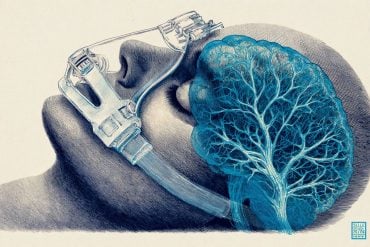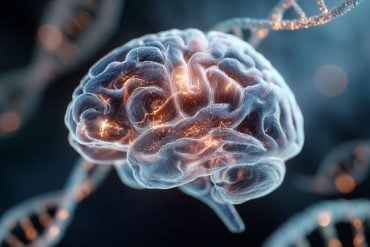Summary: Researchers uncover the nuanced mating behaviors of nematodes, revealing a complex interplay between hermaphroditic and female roundworms in their quest for reproduction. While females actively seek out males, tracking them by smell for mating, hermaphrodites exhibit a starkly different approach, avoiding mating until they deplete their sperm supply.
This research not only enhances our understanding of nematode reproductive strategies but also offers insights into the genetic mechanisms of attraction and behavioral evolution. The study suggests that the presence of sperm or seminal fluid in hermaphrodites acts as a behavioral regulator, highlighting an adaptive strategy to maximize genetic dissemination.
Key Facts:
- Female nematodes exhibit efficient mating behaviors, including tracking males by scent, a previously unknown fact.
- Hermaphroditic nematodes avoid mating until their sperm supply is exhausted, showcasing behavioral flexibility and an evolutionary strategy to maximize gene passage.
- The study provides new insights into the genetic mechanisms of attraction and the evolution of reproductive strategies in one of the most basic model organisms.
Source: Rockefeller University
Sparks fly when a female nematode meets her mate in a Petri dish. Tracking him by smell, she beelines over and is pregnant within moments of physical contact. But for the hermaphroditic version of these tiny roundworms, it’s a very different story.
Anatomically female but capable of self-fertilizing with their own supply of sperm, hermaphrodites remain emphatically uninterested in mating—until their sperm supply runs dry. Only then will they seek out males.
Within such previously unknown details about microscopic mating rituals may lurk clues to a larger understanding of the genetic mechanisms of attraction, according to a new study in Current Biology.

The findings not only fill substantial gaps in knowledge regarding a key model organism, but also shed new light on the evolution of reproductive strategies.
“Biologists are really only beginning to uncover how behaviors evolve, and courtship behaviors are among the most striking that we see,” says Rockefeller neuroscientist Cori Bargmann. “We studied nematode mating rituals to better understand how behaviors change between species.”
Female nematodes
Commonly referred to as roundworms, nematodes are a diverse group of organisms found in almost every habitat on Earth. Among a handful of species exist hermaphrodites capable of self-fertilization. Bargmann’s team chose to compare strategies of hermaphroditic and non-hermaphroditic members of the Caenorhabditis genus.
“These animals all look the same,” says Margaret Ebert, lead author on the study and research associate in the Bargmann lab. “But they use their nervous systems differently, to produce vastly different mating behaviors.”
The researchers began by observing interactions between male and female Caenorhabditis. “We knew almost nothing about female behavior,” Bargmann says. “Before studying hermaphrodites, the first question was what females do.”
The team noted three mating behaviors among female nematodes: they track males by smell, they cease moving upon physical contact with the male, and they open their vulvas to facilitate mating.
“The female is a model of efficiency,” Ebert says. “She displays a strong drive to find a mate and, once in contact, cooperates. Within a minute of meeting a male, she’s pregnant.”
One of the most surprising findings was that the female tracks the male by smell. “We hadn’t known that,” Bargmann says. “It is generally assumed that males do the choosing.”
Hermaphroditic nematodes
The team then turned to closely related, hermaphroditic Caenorhabditis. These nematodes begin their lives with a complement of sperm and egg cells and do not track males by smell.
To the contrary, they actively avoid mating and when males make an attempt, “it’s like the bull at a rodeo,” Ebert says. “They make jerking movements to throw the male off and run away.”
But as they age, hermaphrodites continue producing eggs and cease producing sperm, leaving them with gametes they cannot self-fertilize. Suddenly, male nematodes become appealing.
“Once they run out of sperm they switch over,” Bargmann says. “It’s not that hermaphrodites have forgotten what males are for. It just masks those behaviors for part of its life and then unleashes them later in life, revealing an astonishing level of behavioral flexibility.”
This mating flexibility makes evolutionary sense. From a biological fitness perspective, any animal should want to maximize its own input into the gene pool. As long as hermaphrodites can produce offspring all their own, they have no incentive to mix with males.
But once they are incapable of doing so, it becomes evolutionarily strategic to mate and produce offspring with at least half of their genetic material. The team suspects that the presence of sperm or seminal fluid acts as a sort of regulator, signaling that mating behaviors should be put on hold.
The findings constitute a fundamental step toward answering the most basic questions about how animals evolve to optimize passage of their DNA. “Our findings add another piece to this puzzle,” Bargmann says.
“These species change their approach to maximize the total number of genes they can pass to the next generation. It’s almost like the hermaphrodites read a genetics textbook and asked: ‘how can I maximize my fitness’.”
About this genetics and attraction research news
Author: Katherine Fenz
Source: Rockefeller University
Contact: Katherine Fenz – Rockefeller University
Image: The image is credited to Neuroscience News
Original Research: Open access.
“Evolution remodels olfactory and mating-receptive behaviors in the transition from female to hermaphrodite reproduction” by Cori Bargmann et al. Current Biology
Abstract
Evolution remodels olfactory and mating-receptive behaviors in the transition from female to hermaphrodite reproduction
Highlights
- Female and hermaphrodite mating behaviors differ in related nematode species
- Females are attracted to volatile male odors, but hermaphrodites are not
- The same olfactory neuron pair drives female attraction to males and vice versa
- Sperm-depleted hermaphrodites express some latent female mating behaviors
Summary
Male/hermaphrodite species have arisen multiple times from a male/female ancestral state in nematodes, providing a model to study behavioral adaptations to different reproductive strategies.
Here, we examined the mating behaviors of male/female (gonochoristic) Caenorhabditis species in comparison with male/hermaphrodite (androdiecious) close relatives.
We find that females from two species in the Elegans group chemotax to volatile odor from males, but hermaphrodites do not. Females, but not hermaphrodites, also display known mating-receptive behaviors such as sedation when male reproductive structures contact the vulva.
Focusing on the male/female species C. nigoni, we show that female chemotaxis to males is limited to adult females approaching adult or near-adult males and relies upon the AWA neuron-specific transcription factor ODR-7, as does male chemotaxis to female odor as previously shown in C. elegans.
However, female receptivity during mating contact is odr-7 independent. All C. nigoni female behaviors are suppressed by mating and all are absent in young hermaphrodites from the sister species C. briggsae. However, latent receptivity during mating contact can be uncovered in mutant or aged C. briggsae hermaphrodites that lack self-sperm.
These results reveal two mechanistically distinct components of the shift from female to hermaphrodite behavior: the loss of female-specific odr-7-dependent chemotaxis and a sperm-dependent state of reduced receptivity to mating contact.
Hermaphrodites from a second androdioecious species, C. tropicalis, recover all female behaviors upon aging, including chemotaxis to males. Regaining mating receptivity after sperm depletion could maximize hermaphrodite fitness across their lifespan.






